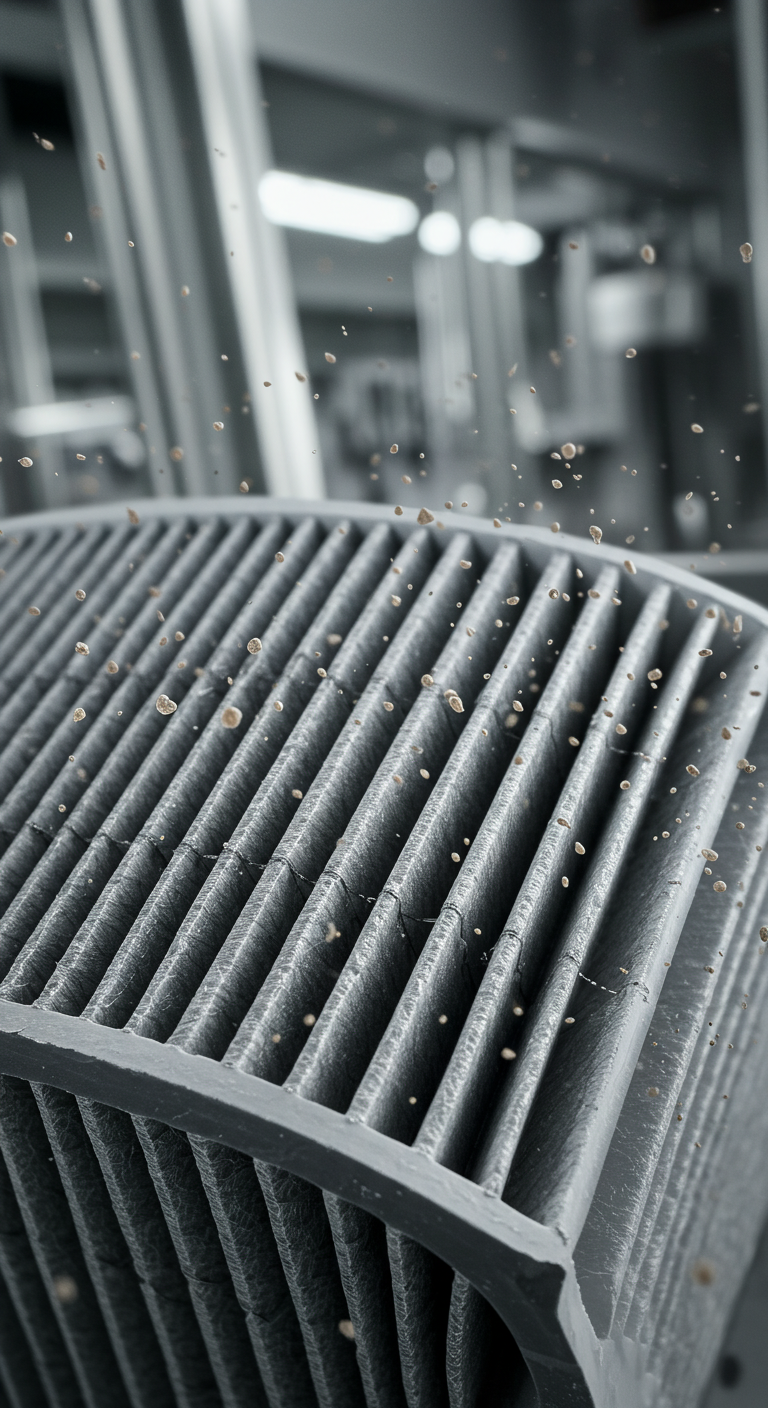The Economics of Dry Gas Filtration_ Reducing Downtime and Maintenance Costs
Executive Summary
In natural gas processing and LNG facilities, filtration is often viewed as a necessary expense rather than a value driver. However, the true economics of dry gas filtration show a different story. Dry gas filters deliver significant cost savings and operational reliability by preventing equipment failures, extending maintenance cycles, and reducing unplanned downtime. This paper examines the Total Cost of Ownership (TCO) of dry gas filtration, showing how proactive filtration can reduce lifecycle costs, optimize maintenance budgets, and improve profitability.
The Hidden Costs of Contaminants
Even trace amounts of solids—such as black powder, rust, sand, or scale—can cause a substantial financial impact in gas processing systems. The primary economic risks include:
- Compressor and Turbine Damage: Particles erode blades and rings, which reduces efficiency and necessitates expensive overhauls.
- Heat Exchanger Fouling: Solids lower heat transfer efficiency, leading to decreased throughput and increased energy consumption.
- Valve and Instrument Wear: Blockages and abrasion increase the frequency of maintenance.
- Meter Accuracy: Wear in rotary and turbine meters leads to inaccurate recording.
Unplanned shutdowns in LNG or midstream facilities are costly, with industry data suggesting they can cost operators between $250,000 and $1 million per day in lost revenue and repair costs. These costs include the repair/replacement of damaged equipment, labor costs for emergency maintenance, contractual penalties for failure to deliver LNG, and restart costs (e.g., flaring, cool-down, and re-pressurization).
The Economic Case for Dry Gas Filtration
Dry gas filtration drives value in four key areas:
- Downtime Reduction: A properly sized dry gas filter can reduce particulate ingress by 99%, significantly decreasing the risk of unscheduled outages and equipment trips. Avoiding even one forced shutdown can offset years of filter investment.
- Extended Maintenance Intervals: Filters protect downstream equipment, which extends the Mean Time Between Failures (MTBF). This reduces maintenance labor, replacement parts, and costly shutdowns.
- Energy Efficiency: Clean gas flow ensures compressors and turbines run at their designed efficiency. Even a 1–2% gain in efficiency can translate into millions in energy savings for large facilities.
- Asset Longevity: By reducing erosion and fouling, filters extend the operational life of capital-intensive equipment like compressors, turbines, and exchangers
Total Cost of Ownership (TCO)
Operators should look beyond the initial purchase price when evaluating dry gas filters. The TCO model incorporates three main components:
- Capital Cost: The initial filter housing and installation.
- Operating Cost: Replacement cartridges, pressure drop energy costs, and labor.
- Avoided Costs: Savings from fewer shutdowns, less equipment damage, and extended maintenance intervals.
- Net Annual Savings:Total Avoided Costs ($750,000) - Annual Operating Costs ($40,000) = $710,000
- Return on Investment (ROI): ($710,000 / $350,000) x 100 = 202%
- Payback Period: $350,000 / $710,000 = ~6 months
- Unplanned outages werereduced by 60%.
- Maintenance costs were cut by $1.2 million annually.
- The payback period was 9 months.
- Conduct Lifecycle Cost Analysis Quantify both direct and avoided costs.
- Optimize Filter Sizing: Avoid undersizing, which increases energy costs and pressure drop.
- Standardize Across Assets: This reduces the number of spare part Stock Keeping Units (SKUs) and simplifies maintenance planning.
- Integrate Monitoring: Use differential pressure sensors for predictive maintenance.
TCO Example Calculation
Cost/Savings Category Details Annual Value Source (cite:) Initial Investment Installed Dry Gas Filter System $350,000 33 Annual Operating Costs Cartridge Replacements -$40,000 34 Avoided Costs (Value Delivered) Reduced Unplanned Downtime 12 hours avoided annually at $50,000/hour +$600,000 36, 37 Reduced Maintenance & Repairs Savings from protecting downstream equipment +$100,000 38, 39 Improved Energy Efficiency 0.5% improvement on $10M annual energy cost +$50,000 40, 41 Total Annual Avoided Costs Sum of avoided costs $750,000 43
Calculating ROI
Case Study: Midstream Operator Savings
A North American midstream operator implemented high-efficiency dry gas filters across four compressor stations. The results were:
This clearly demonstrates the economic value of dry gas filtration in real-world applications.
Best Practices for Maximizing ROI
To maximize the return on investment from dry gas filtration, operators should:
Combine with Coalescing Filters: This is recommended for facilities with high liquid carryover, as coalescing filters often remove both solids and liquids.
Conclusion
Dry gas filtration is a strategic investment in reliability and cost optimization, not just an operational necessity. By extending maintenance cycles, reducing downtime, and improving energy efficiency, dry gas filters deliver strong economic returns and safeguard the profitability of natural gas operations. Operators who view filtration as a "value driver" instead of a "cost center" can unlock significant savings and reliability gains across their LNG, midstream, and distribution assets.
